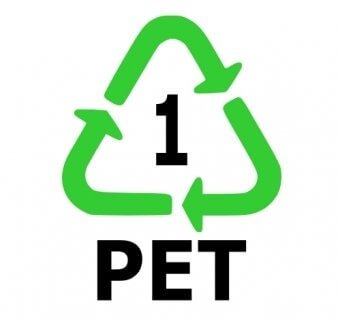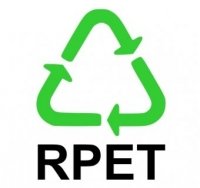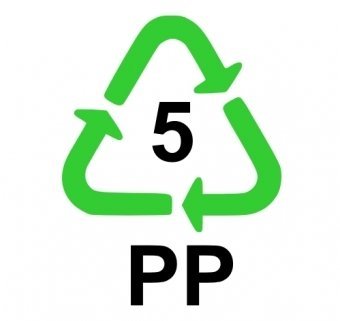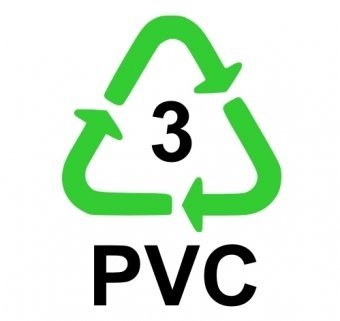PVC lwn PET lwn APET lwn RPET lwn PP untuk Pembungkusan Kotak Plastik
Pembungkusan plastik/asetat menawarkan pilihan yang ringan apabila membuat keputusan untuk membungkus produk anda. Plastik/asetat tidak mudah rosak dan tidak memerlukan pembungkusan pelindung tambahan yang menjadikannya sempurna apabila diangkut. Plastik mengekalkan bentuknya lebih lama daripada bahan alternatif dan boleh dihasilkan dalam pelbagai bentuk dan saiz. Di bawah ini kami mempunyai rangkaian plastik kami, masing-masing dengan penerangan terperincinya sendiri

PET(Polyethylene Terephthalate )
Kekuatan dan Ketahanan: PET terkenal dengan kekuatan dan ketahanannya. Ia adalah bahan yang biasa digunakan untuk bekas minuman dan makanan kerana keupayaannya untuk menahan tekanan dan pengendalian.Struktur Kristal: PET mempunyai struktur kristal, yang boleh menjejaskan sedikit ketelusannya berbanding APET. Namun begitu, ia masih memberikan kejelasan yang baik dan digunakan secara meluas dalam aplikasi pembungkusan.serba boleh: PET ialah bahan serba boleh dan menemui aplikasi di luar pembungkusan, termasuk serat, filem, dan pelbagai barangan pengguna.Kebolehkitar semula: PET boleh dikitar semula dan menyumbang kepada amalan mampan, menjadikannya pilihan mesra alam.

SELERA (Polietilena Tereftalat amorfus)
KEJELASAN DAN KETELUSAN: Terkenal dengan kejelasan dan ketelusan yang sangat baik, APET sesuai untuk aplikasi yang daya tarikan visual dan keterlihatan produk adalah kritikal.Memproses: APET mengalami proses khas yang menjadikannya amorfus, tidak mempunyai struktur kristal. Proses ini meningkatkan ketelusannya dan menjadikannya lebih sesuai untuk aplikasi pembungkusan telus.Ketegaran: APET biasanya lebih kaku daripada PET, menyediakan integriti struktur kepada bekas pembungkusan dan mencegah ubah bentuk.Aplikasi: APET biasanya digunakan dalam kotak plastik bercetak dan pembungkusan termoform di mana penampilannya yang jelas meningkatkan persembahan produk.

RPET: (polietilena-terefalat kitar semula)
Pilihan bahan plastik mesra alam yang menawarkan kejelasan dan cetakan yang sangat baik seperti PET.RPET mengandungi lebih kurang 30%-100% bahan buangan pasca pengguna yang dikitar semula dan merupakan penyelesaian ideal untuk syarikat yang mahukan penyelesaian pembungkusan yang kukuh dari segi ekologi.RPET mempunyai integriti struktur yang sangat baik, ketelusan dan boleh dicetak dengan kualiti yang tinggi menggunakan pelbagai teknik cetakan.
apet vs rpet
SELERA (Polietilena Tereftalat amorfus):
- Kejelasan dan Ketelusan: APET terkenal dengan kejelasan dan ketelusan yang luar biasa, menjadikannya pilihan ideal untuk produk pembungkusan di mana keterlihatan kandungan adalah penting.
- Kekakuan dan Kekakuan: APET menawarkan kekakuan dan ketegaran yang baik, menyediakan integriti struktur kepada bekas pembungkusan dan mencegah ubah bentuk.
- Kebolehkitar semula: APET boleh dikitar semula dan boleh diproses untuk mencipta PET kitar semula (RPET) untuk pelbagai aplikasi.
- Rintangan Haba: APET mempunyai rintangan haba sederhana, menjadikannya sesuai untuk aplikasi yang tidak melibatkan pendedahan suhu tinggi.
- Aplikasi: APET biasanya digunakan dalam pembungkusan untuk makanan, elektronik, produk perubatan, dan pelbagai barangan pengguna.
RPET (Polietilena Tereftalat Kitar Semula):
- Kelestarian: RPET dihasilkan dengan mengitar semula botol APET pasca pengguna dan produk APET lain, menjadikannya pilihan yang mampan yang mengurangkan sisa dan menjimatkan sumber.
- Kesan alam sekitar: Dengan menggunakan RPET, permintaan untuk pengeluaran APET dara berkurangan, membawa kepada jejak karbon yang lebih rendah dan penggunaan tenaga yang lebih sedikit.
- Kualiti dan Prestasi: Kualiti dan prestasi RPET adalah serupa dengan APET, dengan kejelasan yang setanding, kekakuan, dan kebolehkitar semula.
- Aplikasi: RPET digunakan secara meluas dalam pelbagai aplikasi pembungkusan, termasuk Kotak plastik,botol, bekas, dulang, dan produk pengguna lain.

Bahan Pembungkusan Polipropilena (PP)
Polipropilena (PP) adalah penyelesaian yang lebih hijau daripada PVC/PET/RPET kerana pelepasannya yang berkurangan dan lebih ringan daripada bahan lain. Ia amat sesuai untuk pembungkusan atau produk yang akan dihantar dalam jarak jauh atau digunakan beberapa kali.PP packaging is a little softer & lighter than PVC/PET/RPET but offers excellent durability and structural integrity.

PVC: (polivinil klorida)
PVC mempunyai ciri-ciri hebat yang melengkapkan barisan produk pembungkusan hijau. Ia mempunyai permukaan boleh cetak yang sangat baik, kekuatan impak yang tinggi, optik yang hebat dan tahan calar. Kita boleh menggunakannya untuk membuat karton lipat, termoform atau bentuk vakum.PVC is a more rigid plastic material that can maintain its shape better than PET and is ideally suited to enhance consumer & industrial products. Faedah menggunakan PVC ialah kos yang lebih rendah berbanding bahan lain, tetapi menawarkan cetakan/kemasan berkualiti tinggi.
ADAKAH PERBEZAAN ANTARA PET, SELERA, ATAU PETG?
PET ialah polimer termoplastik yang digunakan secara meluas yang biasanya dikenali untuk kegunaannya dalam botol plastik dan bekas untuk minuman dan produk makanan. Ia adalah bahan yang jelas dan kuat dengan sifat penghalang yang baik, menjadikannya sesuai untuk aplikasi pembungkusan. PET juga boleh dikitar semula, dan serba bolehnya melangkaui pembungkusan kepada gentian, filem, dan pelbagai barangan pengguna.
SELERA ialah sejenis PET khas yang mengalami proses khas untuk menjadi amorf, bermakna ia tidak mempunyai struktur kristal. Proses ini meningkatkan kejelasan dan ketelusannya, menjadikannya sesuai untuk pembungkusan di mana daya tarikan visual dan keterlihatan produk adalah kritikal.APET biasanya digunakan dalam kotak plastik jernih, pek lepuh, pembungkusan kulit kerang dan aplikasi pembungkusan jelas lain.
PETG ialah kopoliester PET yang menggabungkan glikol ke dalam struktur kimianya. Penambahan glikol ini menjadikan PETG lebih fleksibel dan tahan hentaman daripada PET standard. Ia mengekalkan banyak sifat berfaedah PET, seperti kejelasan, ketelusan, dan kebolehkitar semula, sambil turut menawarkan keliatan dan ketahanan yang dipertingkatkan. PETG sering digunakan dalam aplikasi di mana gabungan kekuatan dan ketelusan diperlukan, seperti kes paparan, papan tanda, dan peranti perubatan.
Kejelasan dan Ketelusan: Ketiga-tiga bahan, PET, SELERA, dan PETG, terkenal dengan kejelasan dan ketelusan yang sangat baik, menjadikannya sesuai untuk mempamerkan produk.
Kekuatan dan Ketahanan: PET dan PETG umumnya lebih kuat dan lebih tahan hentaman daripada APET, yang tidak berbentuk dan tidak mempunyai struktur kristal yang terdapat dalam PET dan PETG.
Aplikasi: PET biasanya digunakan dalam bekas minuman dan makanan, serta pelbagai barangan pengguna. APET sesuai untuk aplikasi pembungkusan telus, manakala PETG sering digunakan apabila keliatan dan ketahanan tambahan diperlukan.
Kebolehkitar semula: Ketiga-tiga bahan, PET, SELERA, dan PETG, boleh dikitar semula dan menyumbang kepada amalan lestari.
Kesimpulannya, manakala PET, SELERA, dan PETG adalah semua bahan yang berkaitan, masing-masing mempunyai sifat yang berbeza yang menjadikannya sesuai untuk aplikasi yang berbeza. PET digunakan secara meluas dalam pembungkusan minuman dan makanan, APET cemerlang dalam pembungkusan lutsinar, dan PETG menawarkan keliatan yang dipertingkatkan untuk aplikasi yang memerlukan rintangan hentaman. Memahami perbezaan ini membolehkan pemilihan bahan termaklum berdasarkan keperluan pembungkusan khusus dan keperluan produk.
